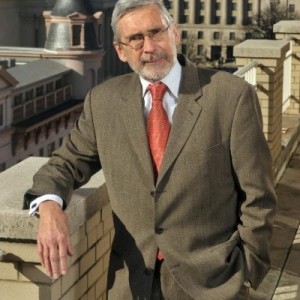Commentary: Pulling Out of the Death Spiral

The Federal government spends close to $100 billion each year on Information Technology (IT). That’s a lot more than the $80 billion figure that shows up in the President’s annual budget and reports from Deltek and others. The latter number only shows spending from the 24 so-called Chief Financial Officers (CFO) Act agencies. It does not include IT expenditures by the legislative branch, the judiciary (including the court systems around the country), small agencies (a goodly sum when aggregated), independent and quasi-government agencies like the Federal Reserve and the Postal Service, or the $9 billion that we now know the intelligence community spends on IT.
But behind those budget figures is a death spiral of spending on legacy IT systems – a crisis we must confront.
The President’s FY 2016 budget suggested that 70 percent of the government’s IT budget is spent on what is called Operations and Maintenance (O&M) of legacy IT systems – as opposed to Development, Modernization, and Enhancement (DME), which is focused on establishing new technology to reduce duplication, driving cost savings and enhancing citizen services.
But in a recent FCW article, Dave Gwyn cites a Government Accountability Office claim that the O&M spend is more than 75 percent of the IT budget. And at the recent FITARA Forum, sponsored by MeriTalk, Federal CIO Tony Scott upped the ante, stating that the government spends “more than 80 percent of the…IT budget on operations and maintenance for legacy systems.”
Cheeky Brit and MeriTalk Founder Steve O’Keeffe recently went on a tirade, dubbing Federal IT systems “aging,” “decrepit,” “insecure,” “dysfunctional,” a “rusting hulk,” and “a crisis.” In this case, O’Keeffe may have been understated. He went on to call for a .usa2020 initiative – replacing our aging Federal IT infrastructure by 2020, the end of the next President’s first term. But how can we get there?
A recent McKinsey Insight article, “Two Ways to Modernize IT Systems for the Digital Era,” provides a roadmap with two potential routes. So with proper thanks to authors Juan Garcia Avedillo, Duarte Begonha, and Andrea Peyracchia, here are some thoughts on alternative paths and governance principles.
There are two approaches for successfully realizing improvements in the short term while transforming the IT architecture in the long-term: Two-speed and Greenfield.
Two-Speed Approach
Under the two-speed approach, the IT organization produces quick iterations and launches of front-end customer-facing applications while continuing to ensure the stability of slower, back-end systems that handle foundational transactions. The agency would need to limit the number of fast-track initiatives. But it would also need to set critical milestones for the long-term transformation and have a comprehensive plan and investment strategy. Without such a plan, they will be caught up in a change cycle that has no end.
Greenfield Approach
As the name suggests, this is a replacement of core legacy IT systems. The approach works best when an agency requires a total transformation that the existing legacy system simply can’t support. Implementing this approach also requires a bit more lead time, substantial capital, and business process redesign to fit the IT tools and packages being acquired.
Governance Principles
Regardless of which approach is chosen, agencies would need to adhere to certain governance principles:
- Ensure that agency leadership plays an active role;
- Have a clear long-term vision and plan;
- Simplify processes and IT at the same time;
- Maintain good housekeeping, implement IT standards, freeze legacy investments, and prevent shadow IT offerings from being introduced;
- Make clear and frequent communications a priority;
- Dedicate the best internal resources to the transformation project; and,
- Choose industry partners that prioritize your account.
Hopefully with these McKinsey insights we can begin our .usa2020 transformation journey.
 Alan P. Balutis (@AlanBalutis) is a Senior Director and Distinguished Fellow at Cisco Systems U.S. Public Sector.
Alan P. Balutis (@AlanBalutis) is a Senior Director and Distinguished Fellow at Cisco Systems U.S. Public Sector.
